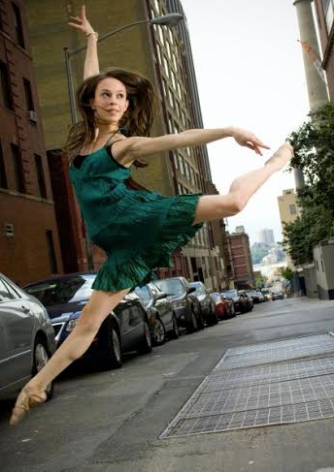INTERVIEW: Brittney Feit-Ellison Ballet graduate, dancer with Tulsa Ballet
Photo Credit: Rachel Neville
Brittney Feit is the often-lusted after, much-acclaimed combination of technique and artistry, with her expression through movement cemented in her dynamic dancing and captivating stage presence. After training with Ellison Ballet, who she attributes her “work smart” philosophy to, Brittney is now a dancer with Tulsa Ballet, taking on an eclectic range of roles, including Jorma Elo’s Slice to Sharp. Her part, originally danced by New York City Ballet’s Ana Sophia Scheller, demanded precise and extreme movements, and private coaching from Jorma Elo. Brittney’s desire to see artistry take center stage in ballet is a credit to both her training and natural talent, with the grace and thought process of an established artist well beyond her years. Now, as Brittney stands poised to become a highlight in the future of ballet, we asked her about dancing the principal role of Marie in The Nutcracker while with Tulsa Ballet II, the hidden struggles of a professional career, and her advice to young dancers. Brittney, whose thoughtful advice mirrors her dancing, is certainly ready to become a new face of ballet.
Why ballet?
When I was young, my parents put me in different activities such as dance, soccer and ice-skating. I always felt attracted to dance, and ballet in particular. I felt that I could express myself best through movement and had a real connection with classical music. I fell in love with ballet around ten years old but it was only until I was sixteen that I started my true pre-professional training with Ellison Ballet. Prior to that I had a lot of stage experience, but little technique.
You studied with Ellison Ballet…how did that experience shape you as a dancer and person?
Being at Ellison Ballet gave me the opportunity to work intensely on my technique while continuing to cultivate my artistry and passion. With the watchful and particular eye of Edward Ellison always present, we learned the values of self-discipline and attention to detail. Without my three years at Ellison Ballet, I would not be where I am today.
During your time with Tulsa Ballet II, you danced a wide range of roles, including the principal role of Marie in The Nutcracker. What has been your favorite part to date?
I would say that performing Marie in Marcello Angelini’s Nutcracker was my favorite part because it was truly a magical experience, but a close second would be when I performed Jorma Elo’s Slice to Sharp. My part was originally Ana Sophia Scheller’s and it involved fast and extreme movements to beautifully bright Vivaldi pieces. Working with Jorma Elo privately on this part was a blessing and will stay with me forever.
What is the hidden struggle of being a professional ballet dancer? What is the best part of your job?
I would say that one of the hidden struggles of being a professional ballet dancer is that it can be as mentally painful as it is physically. You have to have a strong character to deal with the extreme ups and downs that dancers face throughout the season. This can be due to casting, injuries, homesickness and nerves. But if you can maintain confidence and passion throughout your career it will be very rewarding. The best part of my job is the connection with the audience: the give and take of energy. I also feel that this sharing of emotions is particularly special when working with choreographers. For example, working with our resident choreographer Ma Cong always leaves me feeling inspired. His love of movement coupled with his keen understanding and appreciation for music makes for a creative process unlike any other.
The ballet world is moving in some interesting directions. In ten years, what would you like to see change in the world of ballet?
In ten years, I hope to see less emphasis on tricks and more attention to artistry. Technique is always important, but sometimes it seems that dancers lose sight of the reason why we dance: to portray an emotion or story through movement. In doing so, as with all art forms, we take our audiences to another place and allow them to reflect on their life and the lives of others.
What piece of advice would you give a young dancer?
Always work hard and be truthful with yourself. Without these two things I would have never been able to get through Ellison Ballet. I learned to not only work hard, but “work smart” as Edward Ellison would say. This means that you give the proper energy and focus to what needs to be fixed instead of trying to strain and work “hard” with no goals in mind. Also, I would say that visualizing yourself as the dancer you want to be will help immensely. If you can see it in your mind, you can become it!
